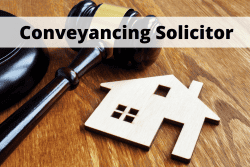Getting through conveyancing can be time-consuming and stressful, but having the right support will make the experience much easier.
There are eight basic steps to the conveyancing process. First of all, you need to find a trustworthy conveyancer once an offer on a property has been accepted: this marks the beginning of the process. After doing some research and finalising the fee structure, you will need to commit to using the conveyancer’s services by signing a letter of engagement and then using an official document such as a passport or a utility bill to verify your address and identity.
Doing your own research and choosing a quality conveyancer is extremely important, as proceeding with a conveyancer without checking their qualifications may mean being handicapped by inferior services, as seen in this report from The Telegraph.
If you are looking for advice on conveyancing, then a trusted source such as https://www.samconveyancing.co.uk/conveyancing-process should be able to provide some extra information.
Choose Services You Can Trust
The third step of conveyancing is completing all the paperwork that the conveyancer sends you, making sure that the answers are accurate. Next you will need to contact the mortgage provider on the property if a mortgage is outstanding. The lender needs to know that a property is being sold and whether the balance will be settled or transferred to another property.
When the conveyancer is in possession of your completed paperwork, then a draft contract can be drawn up that can be sent to other parties. This contract will most likely include a list of fittings and fixtures that will be included in the property’s sale. At this stage, further negotiations may take place, including final adjustments to the sale price of the property. This is also the point at which surveyors may inspect the property, and there may be requests for repairs. Decisions on these will be individual in every case.
Exchange and Completion
The sixth and welcome step is the exchange of contracts with the other conveyancer. This happens when a buyer is satisfied with the condition of the property and decisions about fittings and fixtures are settled.
The seventh stage is between contract exchange and the completion of the sale, and both parties are, at this point, committed to the sale proceeding. The last stage is of course completion, and at this point the property is vacated and the keys given to the new owner. This step usually occurs two to four weeks after the exchange. The process should be complete at this stage, and the sale will have gone through with all issues resolved satisfactorily for everyone involved.


